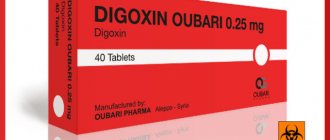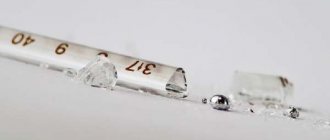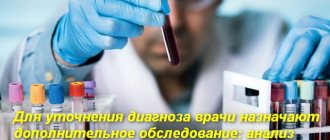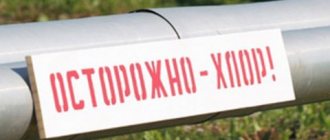Food bacterial poisoning is one of the most common types of food intoxication in humans. They are rarely fatal, but can cause significant harm to the body.
Toxic infections are not transmitted from person to person and are not contagious. Microbial food poisoning has different origins and, accordingly, different treatment methods.
Mechanism of poisoning
Food poisoning is caused by the following microorganisms:
- proteas;
- streptococci;
- shigella;
- salmonella sticks;
- bacilli;
- staphylococci;
- Escherichia.
Infection with bacteria usually occurs through the fecal-oral route. For the disease to develop, 108 pathogenic cells must be present in the products. At the same time, the increased volume of microbes does not in any way affect the organoleptic characteristics of food. A person eats such foods without even realizing that they are dangerous.
When bacteria enter the digestive system, they provoke inflammation of the mucous membrane of the small intestine. As a result, symptoms of intoxication are observed. The pathology is localized only in the intestines.
Inpatient therapy
Antibacterial therapy is prescribed after testing stool and vomit for major infections. The blood is tested for the presence of antibodies to the main pathogens: Yersinia, Shigella, Salmonella.
Antibacterial drugs of the cephalosporin and fluoroquinolone groups are empirically prescribed: Ceftriaxone, Ciprofloxacin, which act on most microorganisms.
To correct dehydration and electrolyte disturbances leading to heart rhythm disturbances and convulsions, crystalloid solutions are administered intravenously: Ringer's, Glucose, Potassium Chloride, Sodium Chloride.
Antiemetic drug Cerucal
If necessary, an antiemetic is prescribed - Cerucal. Patients need a gentle diet.
To speed up recovery, a complex immunoglobulin preparation, bacteriophages (Coliproteus, Intesti-bacteriophage), selective decontaminants - Enterol, Biosporin - are used. To restore normal intestinal microflora, probiotic preparations are used: Lactobacterin, Bifidumbacterin.
For botulism, cholinesterase inhibitors are used to restore the functioning of the nervous system and serum. If breathing stops, artificial ventilation is used.
Classification
Food poisoning of a microbial nature has many varieties. Each of them is characterized by certain features.
Poisoning by B. Proteus bacteria
This pathology is the result of Pr. mirabilis and Pr. vulgaris. These types of toxins are produced by bacteria that are resistant to heating up to 65 °C for half an hour and drying out for 12 months. Microorganisms can be contained in fish and animal meat, salads.
Proteas do not lead to the breakdown of proteins, so poisoned foods do not show any signs of spoilage. When ingested, they provoke an increase in temperature to 39 °C and the appearance of diarrhea. Blood may be present in the stool.
Severe disease is accompanied by a pronounced clinical picture. It is characterized by convulsive syndrome, cyanosis, and oliguria.
Enterococcus poisoning
These bacteria are found in small quantities in the body of every person. Therefore, they are classified as opportunistic flora. They are resistant to half an hour of heating. Also, these microbes are not affected by a 6.5% sodium chloride solution.
The cause of poisoning by opportunistic microbes is the consumption of finished products that do not undergo repeated heat treatment. This category includes sausage, meat and fish products, mashed potatoes, jellied meat. Poor quality products have a bitter taste.
Poisoning by spore-bearing bacteria
The cause of the pathology may be the consumption of food containing toxins from Cl bacteria. Perfringens, which are resistant even to full heat treatment. If finished products have been in a warm place for a long time, there is a risk of spore germination.
The cause of the development of this type of food poisoning can be fish and meat products. In children, manifestations of intoxication can be provoked by milk.
The pathology has a rather long incubation period - up to 22 hours. The disease is accompanied by nausea, diarrhea with a pungent odor, and abdominal cramps. Temperatures increase quite rarely.
Pathology can also occur as a result of consuming products containing the spore-forming aerobe Bac. Cereus. The main sources of the microorganism are plant products, sausages and milk.
The bacterium is resistant to low and high temperatures and to sodium chloride solution. These microorganisms can only be dealt with using lactic acid bacteria.
With the development of this intestinal disease, the incubation period ranges from 4 to 16 hours. Then pain in the abdomen and stool disturbances appear. Defecation can occur up to 20 times a day. The duration of poisoning is 1–2 days.
Features of the treatment of microbial intoxication
Most symptoms caused by different pathogens are similar. Pathogenic microorganisms can be located in a specific section of the gastrointestinal tract. Both aspects are important, since the nature of treatment and its duration depend on the correct identification of the source of the disease and location. It is worth contacting a doctor to make a diagnosis and prescribe therapy to restore health. An experienced physician will be able to take into account the characteristics of the patient’s body and prescribe excellent methods for the child and older person.
For treatment, at the first manifestations, it is necessary to rinse the stomach using a warm solution of potassium permanganate or baking soda. With botulism, the time after poisoning for gastric lavage does not matter. The process continues until clean water is obtained. After washing, it will be necessary to restore the water-salt balance using rehydration therapy. For mild disease and slight loss of water (within 3% of body weight), take up to 1 liter per hour of saline solution (Oralite, Rehydron, citraglucosolan). The pace is effective and will not induce vomiting.
In case of severe poisoning, therapy is carried out intravenously with the introduction of a solution (trisols, pactasols, chlosols, quartasols) by drip. The duration of the procedure depends on the patient's condition. During the procedure, up to 3 liters of recovery fluid can be administered.
Having restored the water-salt balance, detoxification is carried out using drugs: hemodez, rheopolyglucin, albumin. For severe inflammation of the stomach and/or intestines, use:
- smecta, sorbex, enterorsgels (as enterosorbents);
- binder powders containing calcium carbonate, bismuth nitrate;
- preparations of no-shpa, spasmol, drotaverine (as antispasmodics);
- ibuprofen, diclofenac, indomethacin (as non-steroidal anti-inflammatory drugs);
- bifidumbacterin, lactobacterin, acylact (eubiotics, in order to normalize the microflora) and vitamins.
Antibiotic treatment is given to patients with weakened immune systems. To treat botulism poisoning, medications are used that help normalize nervous activity, antibiotics, cardiotonic drugs, and anti-botulinum serum.
Consequences
Most often, microbial toxins provoke complications in young children, pregnant women and the elderly. A dangerous consequence is sepsis, which can be the result of the development of staphylococci and the accumulation of enterotoxin.
At the initial stage, there is an increase in temperature, impaired breathing and pulse. Then pneumonia or peritonitis appears. Some people develop ulcers on the skin. In complex cases, there is a possibility of septic shock and circulatory disorders at the tissue level. This causes death.
In people with chronic digestive diseases, microbial toxins can cause problems such as:
- severe pain syndrome;
- lack of intestinal peristalsis;
- intoxication;
- diarrhea with bloody impurities;
- peritonitis.
Also, the consequences of these poisonings are myocardial dysfunction, pulmonary edema, acute renal failure. However, the most dangerous complication is infectious-toxic shock.
First aid
For nausea, vomiting, and diarrhea, it is necessary to take enteral sorbents: activated carbon, Enterosgel, Atoxil. The products absorb microbial toxins and reduce diarrhea syndrome.
Sorbents Enterodes and Enterosgel
If a person feels nausea after eating a suspicious food, it is necessary to rinse the stomach with a solution of potassium permanganate.
Enterodesis removes toxins from the intestines. Taken orally.
Regidron, which is dissolved in water and given to the poisoned person, will help prevent dehydration during vomiting and profuse diarrhea.
You should not rush to treat someone who has been poisoned with antibiotics before testing, since it is necessary to accurately determine the infectious agent.
Preventive actions
The pathogenesis of food poisoning of microbial etiology is such that the main method of prevention is to control the sanitary condition of meat processing plants, poultry farms and dairies.
Measures for individual prevention of food poisoning of microbial origin include the following:
- compliance with personal hygiene standards;
- proper food storage;
- prolonged heat treatment of food;
- following the rules of home canning;
- refusal to consume questionable products.
Food poisoning can cause dangerous consequences. Compliance with individual preventive recommendations and compliance with sanitary control rules will help to avoid this. If symptoms of intoxication appear, you should immediately consult a doctor.
Video: horror of germs inside us
Read further:
Classification of food poisoning: prevention and first aid
Food poisoning of non-microbial origin - prevention and consequences
The benefits and harms of soy and its products for the health of men and women
What are mycotoxins:











